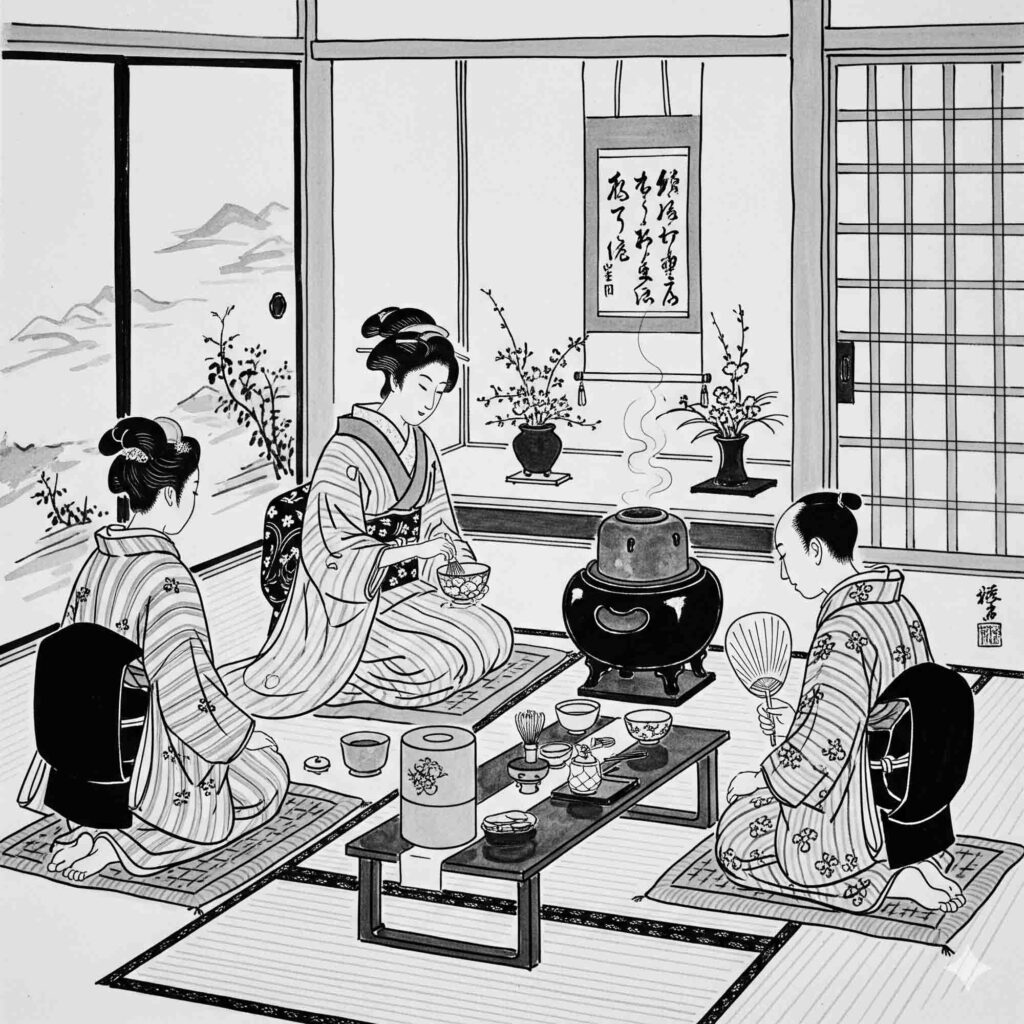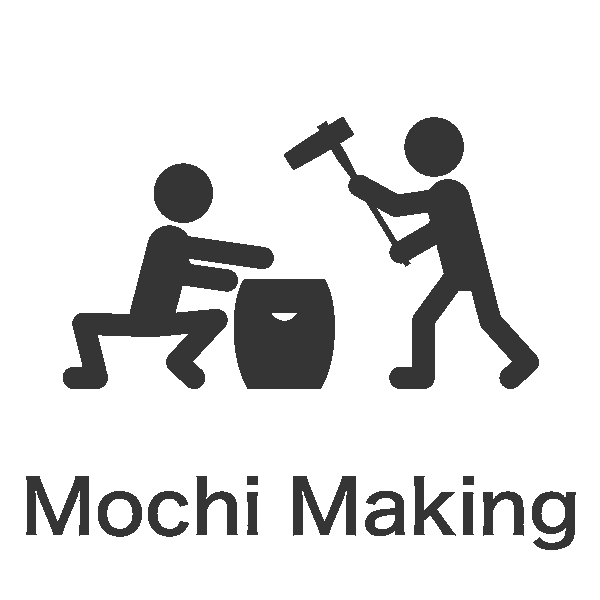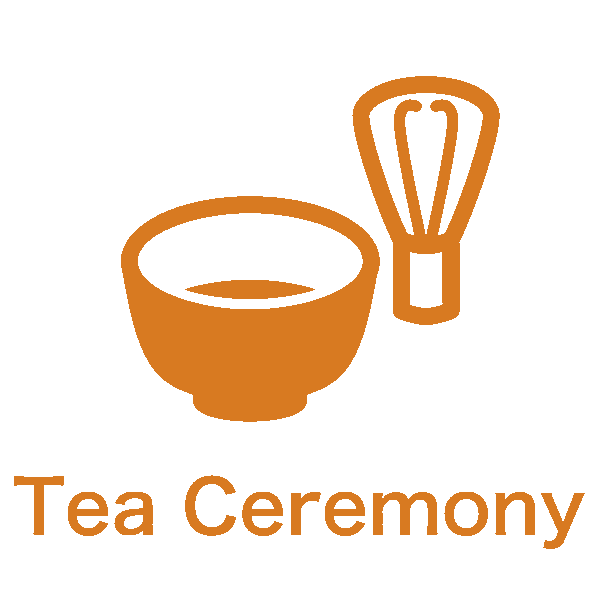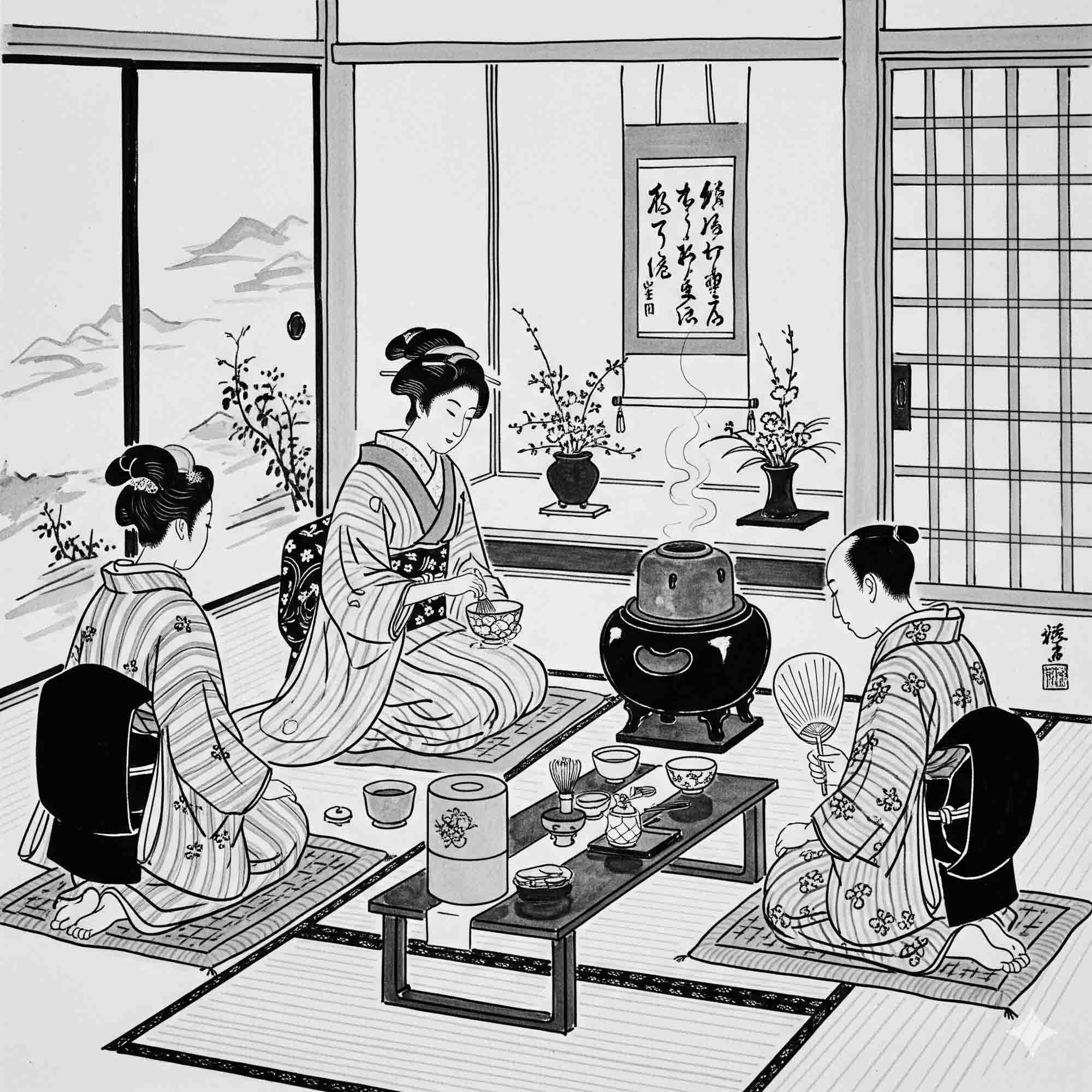
- 1. What is the Tea Ceremony?
- 2. History of the Tea Ceremony
- 3. Tea Utensils (Chawan, Chasen, Chagama, etc.)
- 4. low of the Tea Ceremony (Basic Steps)
- 5. The Spirit of Tea Ceremony – Wa Kei Sei Jaku
- 5.1. 1.Wa (Harmony)
- 5.2. 2. Kei (Respect)
- 5.3. 3. Sei (Purity)
- 5.4. 4. Jaku (Tranquility)
- 6. Experiencing the Tea Ceremony
What is the Tea Ceremony?
The Japanese tea ceremony (sadō or chadō) is a traditional art that developed uniquely in Japan. Through the act of preparing and serving tea, it nurtures mindfulness and emphasizes the importance of human connection.
The essence of tea ceremony is not simply drinking matcha, but rather the host and guest coming together to share a heartfelt moment of hospitality.
The tea ceremony was refined in the 16th century by Sen no Rikyū. With the spirit of wabi-sabi—an appreciation of simplicity and quiet beauty—as its foundation, the tea ceremony harmonizes the entire setting: the tea room, tea bowl, hanging scroll, garden, incense, and more.
It also values the concept of ichigo ichie, meaning “once-in-a-lifetime encounter.” Each meeting and experience is seen as unique and unrepeatable, symbolizing the heart of Japanese hospitality.
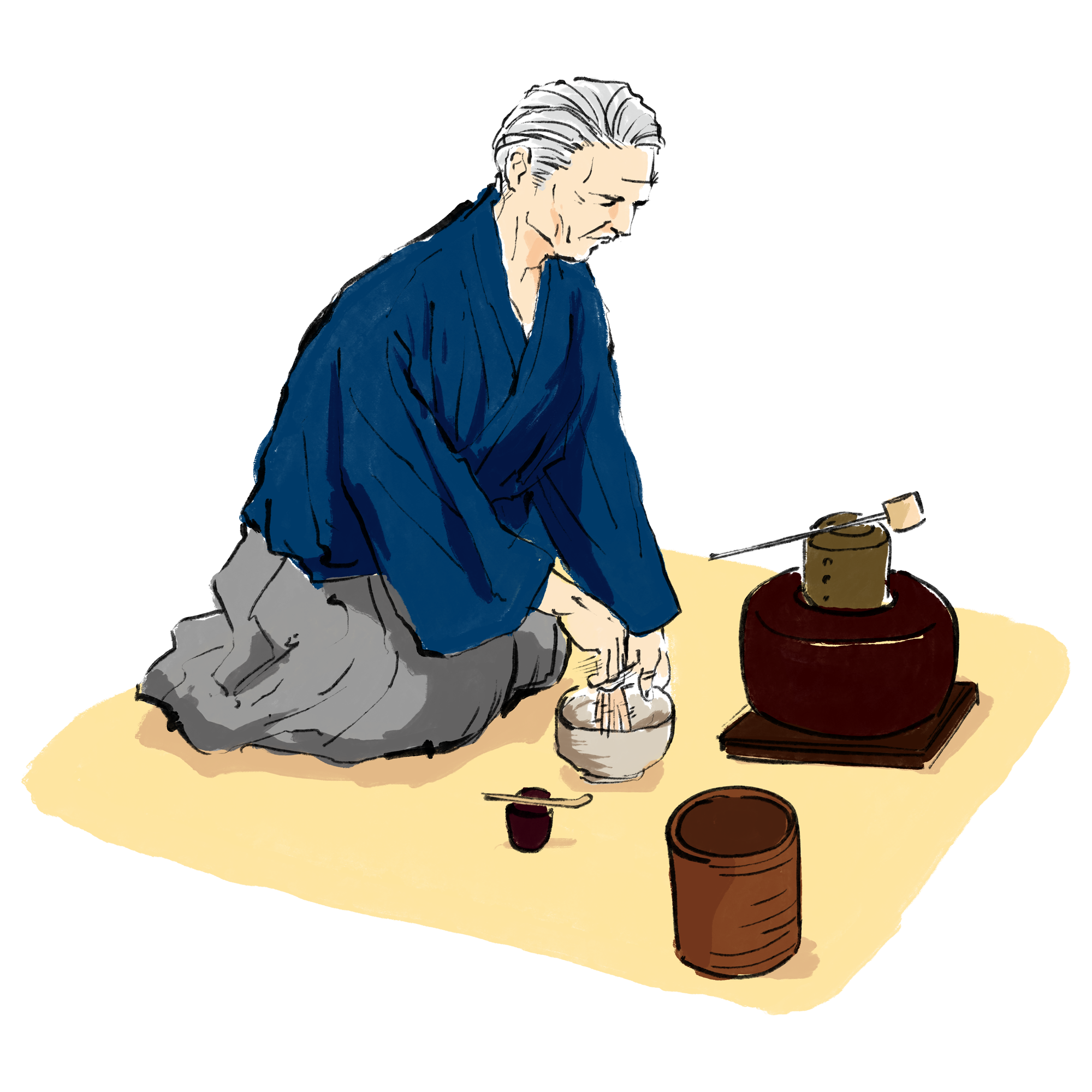
History of the Tea Ceremony
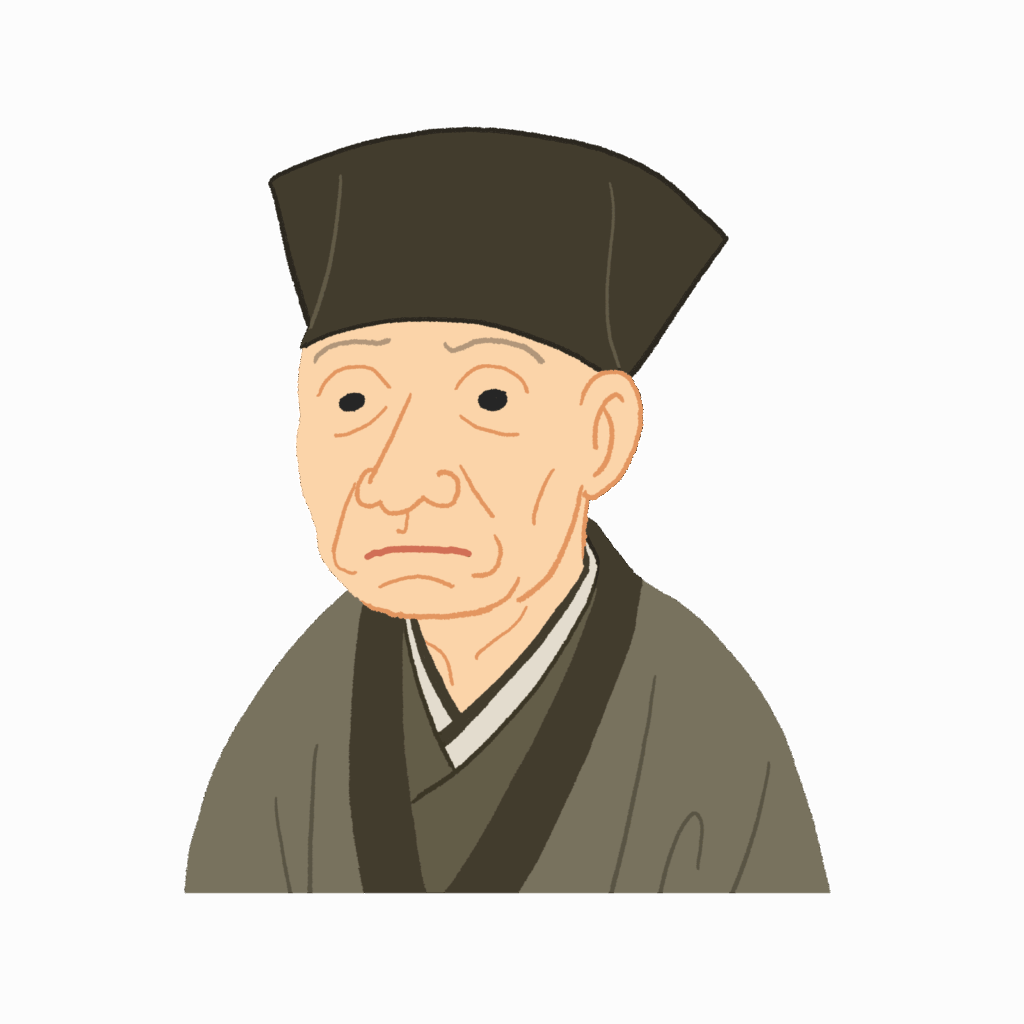
The tea ceremony originates from Chinese tea culture, which was introduced to Japan in the 9th century.
During the Kamakura period (1185–1333), Zen monk Eisai promoted tea drinking as part of spiritual discipline in temples.
By the Muromachi period (1336–1573), tea gatherings became popular among samurai and nobles as a form of social interaction. Eventually, Sen no Rikyū perfected the art with his emphasis on wabi-sabi aesthetics.
His influence continues to this day, and tea ceremony has become more than drinking tea—it embodies Japanese aesthetics, etiquette, and cultural values.
Tea Utensils (Chawan, Chasen, Chagama, etc.)
Many utensils are used in tea ceremony. Here are some of the most important:
- Chawan (Tea Bowl): Used to prepare and drink matcha. Its shape and design change according to the season.
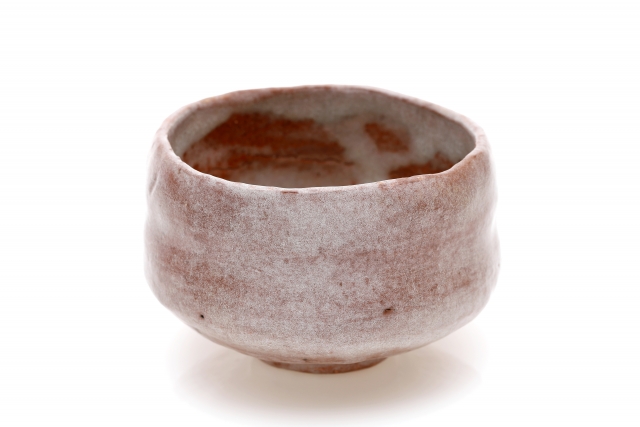
- Chasen (Bamboo Whisk): A whisk made of bamboo, used to blend matcha and hot water into a frothy drink.
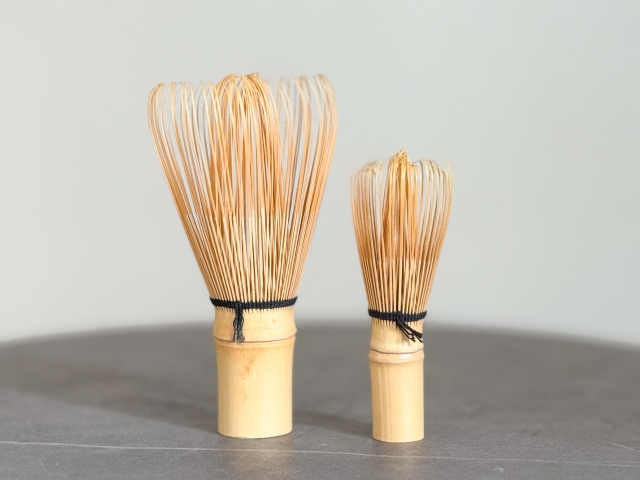
- Chagama (Iron Kettle): A heavy iron kettle for boiling water. The steam and sound of the kettle add to the atmosphere.
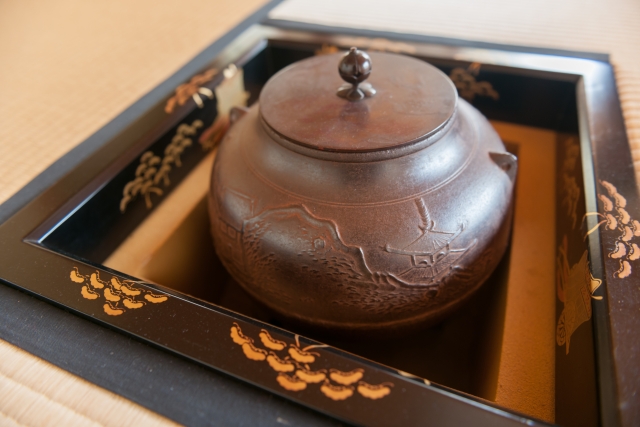
- Hishaku (Ladle): A bamboo ladle for scooping hot water from the kettle.
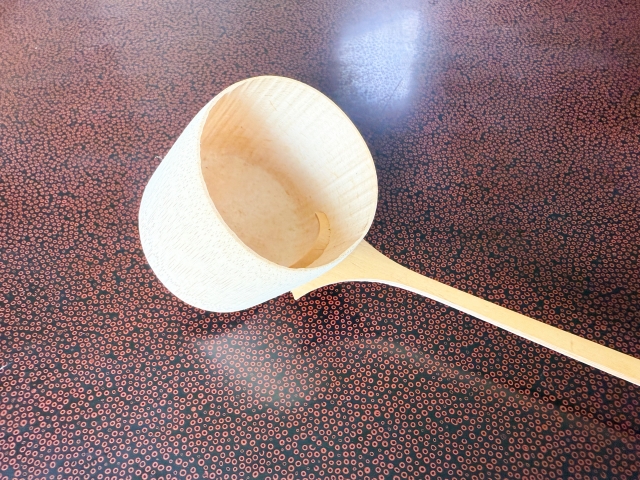
- Chashaku (Tea Scoop): A slender bamboo scoop used to measure matcha powder.
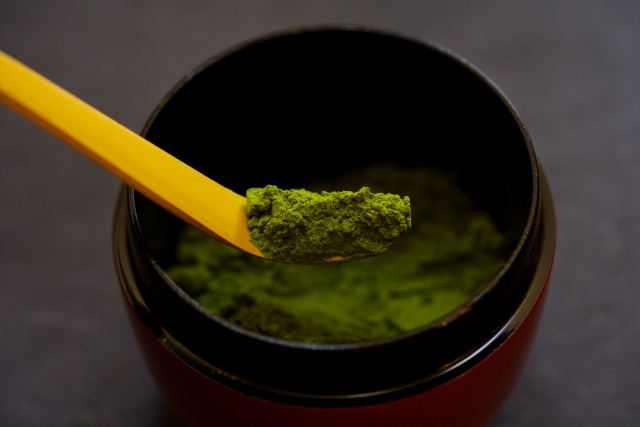
Each tool has its own role and aesthetic, and the way they are handled expresses elegance and respect.
low of the Tea Ceremony (Basic Steps)
The tea-making procedure (otemae) follows a series of precise, mindful actions:
The host purifies and arranges the utensils.
Matcha powder is placed in the bowl, hot water is added, and the tea is whisked into a fine foam.
The tea is respectfully presented to the guest.
The guest admires the bowl, offers words of thanks, and drinks the tea.
The host cleans and puts away the utensils.
Though simple in appearance, each gesture carries deep meaning and mindfulness.
The Spirit of Tea Ceremony – Wa Kei Sei Jaku
The tea ceremony values four key principles:
1.Wa (Harmony)
Harmony with others and kindness. In the tea room, all are equal, regardless of status or nationality.
2. Kei (Respect)
Respect for all things—guests, host, utensils, the season, and nature. Thoughtfulness is shown through every action and word.
3. Sei (Purity)
Cleanliness and inner clarity. The tea room and utensils are kept spotless, reflecting both physical and spiritual purity.
4. Jaku (Tranquility)
A calm and quiet mind. The tea room offers a space to settle the spirit, a rare moment of peace in today’s busy world.
Experiencing the Tea Ceremony
Through a tea ceremony experience, you will not only learn how to prepare and serve tea, but also encounter the Japanese spirit of heartfelt hospitality.
The tea ceremony is an art experienced with all five senses: the taste of the tea, the fragrance of the incense, the sound of water, the refined gestures, and the quiet atmosphere of the tea room.
Take a moment to feel the difference between the hurried flow of daily life and the serene passage of time in the tea room.
